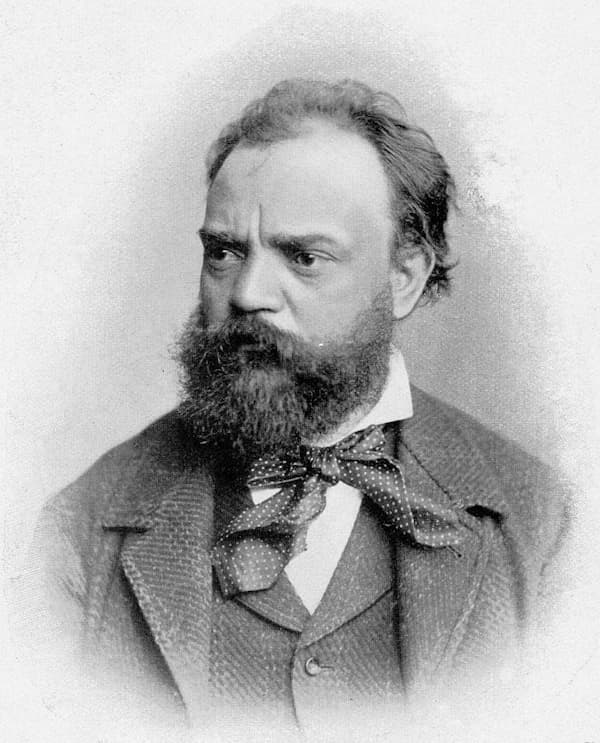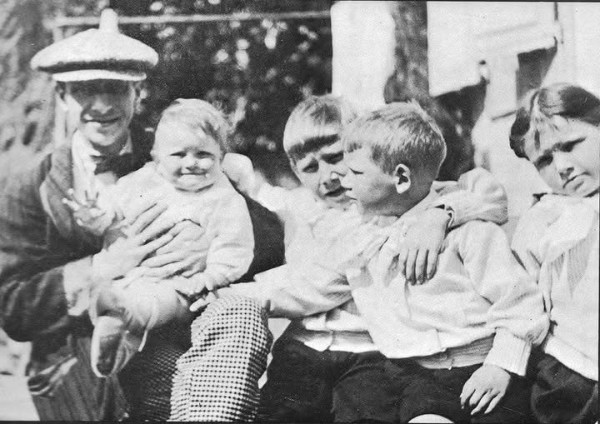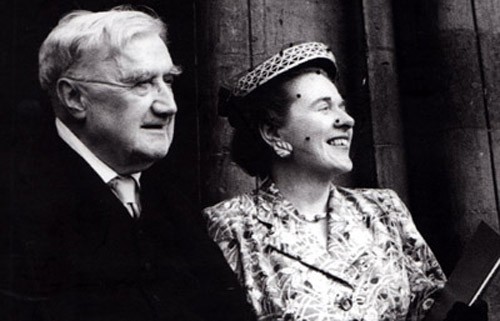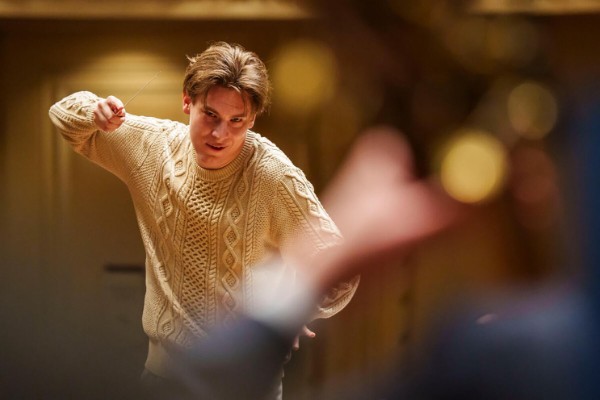In the spring of 1892, about 6 months before he departed to lead the National Conservatory in America, Czech composer, Antonín Dvořák’s music publisher asked him to write a little ‘humoresque’. He complied with a lovely little piano piece in F-sharp minor.

Antonín Dvořák, 1882
Antonín Dvořák: Humoresque in F-Sharp Major, B. 138 (version for piano) – Humoresque (Vivace in F-Sharp Major), B. 138 (Ivo Kahánek, piano)
It’s not technically demanding but does run through a variety of moods.
What is humoresque? In its most basic sense, it is a short, lively piece of music. At its most profound, it carries the ideas of whimsy or the fantastic. In short, it is whatever the composer decides to make of it. There’s no set form and the main ingredient is the composer’s imagination.
Later, while in America, Dvořák kept several ongoing sketchbooks of his music ideas. In 1894, after his second year in America, Dvořák went back to Bohemia for a holiday. While there, he created his 8-movement Humoresque piano cycle. For those familiar with the music he wrote in America, such as his Symphony No. 9, From the New World, or his American string quartets and quintets, many musical elements will sound familiar: pentatonic melodies, syncopated rhythms, and a minor scale (with a lowered seventh degree for a touch of mystery).
The moods of the 8 pieces vary considerably, from a cheerful dance to a melancholic dream. We rarely hear the entire set of Humoresques, mainly because one has risen to the top in terms of popularity, but to place that work in context, let’s make our way through them.
His first Humoresque has all the elements we know from his American music: pentatonic scales, and a melody that tries to evoke the native American melodies and rhythms he thought so important to a new musical world.
Antonín Dvořák: 8 Humoresques, Op. 101, B. 187 – No. 1. Vivace in E-Flat Minor (Ivo Kahánek, piano)

Humoresques Nos. 1-8 for Piano, Op. 101, by Antonín Dvořák © Wikipedia
At a slower tempo, No. 2 almost feels like a lullaby at its opening. The second melody starts simply and then is decorated various ways with running notes and a firm bass. The second section puts all the interest in the right hand with little note flips. The return of the first section is quieter and slower.
Antonín Dvořák: 8 Humoresques, Op. 101, B. 187 – No. 2. Poco andante in B Major (Ivo Kahánek, piano)
No. 3 is a delicate little dance with a singing melody.
Antonín Dvořák: 8 Humoresques, Op. 101, B. 187 – No. 3. Poco andante e molto cantabile in A-Flat Major (Ivo Kahánek, piano)
The third piece in a row with the same tempo of Poco Andante, No. 4 brings us the introduction of a new sound: it has a jazz feel, accomplished through the syncopations and that mysterious seventh.
Antonín Dvořák: 8 Humoresques, Op. 101, B. 187 – No. 4. Poco andante in F Major (Ivo Kahánek, piano)
Using the native American rhythms that Dvořák admired, No. 5’s Vivace provides us with a contrast to the preceding 3 Poco Andantes. His contrasting sections: a bold and declarative first section and the more delicate second section show us how changes of dynamic can have a strong effect. You’ll hear parts of the American string quartet towards the end before shortened versions of the first and second section return.
Antonín Dvořák: 8 Humoresques, Op. 101, B. 187 – No. 5. Vivace in A Minor (Ivo Kahánek, piano)
The song-like qualities of No. 6 are constantly interrupted by more rhythmic melodies. A middle section that’s almost hymn-like in its delivery again shows us Dvořák’s power of melodic writing.
Antonín Dvořák: 8 Humoresques, Op. 101, B. 187 – No. 6. Poco allegretto in B Major (Ivo Kahánek, piano)
Ah, this sounds familiar. The most famous of all the 8 Humoresques, slow and graceful, as the tempo indication requires.
We’ll track other versions below.
Antonín Dvořák: 8 Humoresques, Op. 101, B. 187 – No. 7. Poco lento e grazioso in G-Flat Major (Ivo Kahánek, piano)
Dvořák closes with a final humoresque that shifts through many different tempos. All the elements of Dvořák’s interest in the music of America come to the fore.
Antonín Dvořák: 8 Humoresques, Op. 101, B. 187 – No. 8. Poco andante – Vivace – Meno mosso, quasi Tempo I in B-Flat Minor (Ivo Kahánek, piano)
More on Number 7
Humoresque No.7 was a favourite encore of the virtuoso violinist Isaac Stern. He made the arrangement himself and recorded it many times; his first recording was in 1965.
Antonín Dvořák: 8 Humoresques, Op. 101, B. 187 – No. 7. Poco lento e grazioso in G-Flat Major (arr. A. Harris for violin and orchestra) (Isaac Stern, violin; Columbia Symphony Orchestra; Milton Katims, cond.)
Fritz Kreisler also made his own arrangement of the work, here performed on violin and piano.
Antonín Dvořák: 8 Humoresques, Op. 101, B. 187 – No. 7. Poco lento e grazioso in G-Flat Major (arr. F. Kreisler) (Takako Nishizaki, violin; Jenő Jandó, piano)
An arrangement for viola and cello was made.
Antonín Dvořák: 8 Humoresques, Op. 101, B. 187 – No. 7. Poco lento e grazioso in G-Flat Major (arr. for viola and cello) (Kristína Fialová, viola; Petr Nouzovský, cello)
And, in close imitation of the violin part, an arrangement for piccolo and piano was recorded.
Antonín Dvořák: 8 Humoresques, Op. 101, B. 187 – No. 7. Poco lento e grazioso in G-Flat Major (arr. for piccolo and piano) (Peter Verhoyen, piccolo; Stefan De Schepper, piano)
And then we get to lyrics. Humoresque No. 7 was set to many different kinds of lyrics – some scatological and some advisory. Supreme Court Justice William O. Douglas claimed that he and Yale law professor Thurman Arnold did the first combination of train advice and the Humoresque. In his autobiography, Douglas claimed that sometime in the 1930s, using lyrics already in the train restroom, they came up with Passengers will Please Refrain… Here it is as sung by Oscar Brand on his 1956 recording of Bawdy Songs and Backroom Ballads.
1956 Oscar Brand – Humoresque (Passengers Will Please Refrain)
Carry forward to 2018, and Jack White included lyrics that he was told were by Al Capone when he was in Alcatraz. Although the manuscript White bought was in Capone’s hand, it seems as though Capone was writing the words he knew for the melody for the band at Alcatraz. The original author is unknown.
Humoresque – Jack White
The old-fashioned, positively mediaeval idea of the quodlibet, combining different melodies in one song uses the Humoresque in combination with an even older song by Stephen Foster. Lucille Ball memorably duets with her husband Desi Arnez.
I Love Lucy – Swannee River and Humoresque
They weren’t the first to make this match-up. A 1914 recording matches soprano Alma Gluck singing Foster’s melody while the violinist Efrem Zimbalist plays the Humoresque.
Alma Gluck & Efrem Zimbalist (Vn) – Old Folks at Home (Swanee River) – 1914
And in 1936, with Gary Cooper singing the Humoresque as a trombone part, he duets with Jean Arthur singing Old Folks at Home in Mr. Deeds Goes to Town.
Mr Deeds Goes To Town 1936 Comedy Drama by Frank Capra, starring Gary Cooper & Jean Arthur
The humour in Dvořák’s best-known Humoresque lives on.
For more of the best in classical music, sign up for our E-Newsletter



